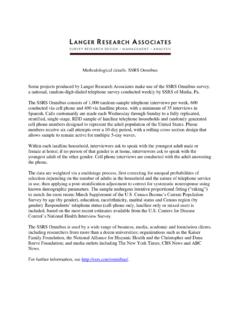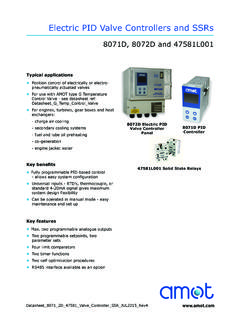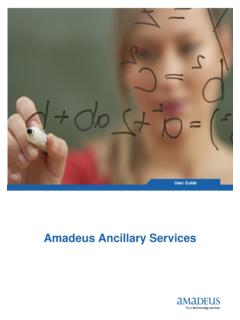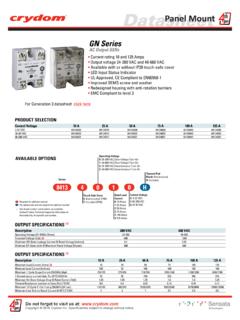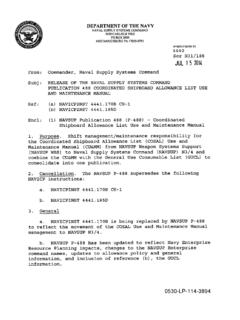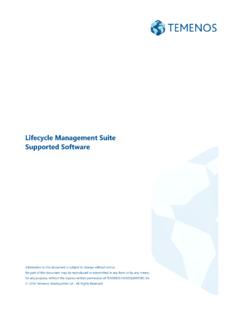Transcription of eC-SSRS Assessments of Lifetime Ideation and Behavior are ...
1 References 1. FDA. Suicidality: Prospective Assessment of Occurrence in Clini-cal Trials. Department of Health and Human Services. 2010. 2. Hammad TA, Laughren T, Racoosin J. Suicidality in pediatric pa-tients treated with antidepressant drugs. Arch Gen Psychiatry. Mar 2006;63(3):332-339. 3. Mundt JC, Greist JH, Gelenberg AJ, Katzelnick DJ, Jefferson JW, Modell JG. Feasibility and validation of a computer-automated Columbia-Suicide severity rating scale using interactive voice re-sponse technology. J Psychiatr Res. May 27 2010. 4. Posner K, Oquendo MA, Gould M, Stanley B, Davies M. Columbia Algorithm of Suicide Assessment (C-CASA): -cation of suicidal events in the FDA s pediatric suicidal risk analysis of antidepressants. Am J Psychiatry.
2 Jul 2007;164(7):1035-1043. 5. Posner K, Brown GK, Stanley B, et al. The Columbia-Suicide Se-verity Rating Scale (C- ssrs ): Initial Validity and Internal Consis-tency Findings from Three Multi-Site Studies with Adolescents and Adults. Am J Psychiatry. In Press. 6. Stone M, Laughren T, Jones ML, et al. Risk of suicidality in clinical trials of antidepressants in adults: analysis of proprietary data sub-mitted to US Food and Drug Administration. BMJ. 2009;339 ,007 eC-SSRS records were evaluated 6,308 Baseline Calls 28,699 Follow-up CallsConclusionsSuicidal Behavior is rare, even in clinical trials that involve high-risk patients, but the risk is real and the need to protect patients and improve data quality are of paramount importance.
3 Eports of suicidal Ideation and Behavior at baseline, and for prospectively monitoring Ideation and Behavior at subsequent visits. eC-SSRS assessment methods with electronic data capture and immediate feedback of results addresses the objectives of the FDA guidance for monitoring suicide Ideation and Behavior in clinical trials. Subjects with Positive baseline reports due to either Lifetime Ideation with intent to act or prior suicidal Behavior are 4 to 5 times more likely to report suicidal Behavior during study participation than patients with Negative baseline reports. Subjects Positive for both at baseline are nearly 8 times more likely to report suicidal Behavior during the provides electronic patient reported outcome services to industry-sponsored clinical trials, including eC-SSRS Assessments .
4 Licensing fees are provided to the Research Foundation for Mental Hygiene and Healthcare Technology Systems for delivery of eC-SSRS . Mundt is a consultant to Healthcare Technology Systems and ERT and has minor stock holdings in each company. Dr . Greist is a principal stock shareholder of Healthcare Technology Systems. Mr . Federico is Vice President of ePRO Solutions for ERT. Dr . Posner is Director of the Center for Suicide Risk Assessment at the Research Foundation for Mental Hygiene. Dr Posner receives royalties from the e-CSSRS and her center, the Columbia Center for Suicide Risk Assessment, receives research support from pharmaceutical eC-SSRS report categorized as Positive or Negative Positive reports (N = 2,220): Suicidal Ideation severity of 4/5, OR actual, aborted, or interrupted suicide attempts or preparatory Behavior Negative reports (N = 32,787).
5 All cases not meeting these criteria Assessment burden On average, eC-SSRS Assessments took minutes and responses to queries to complete Positive eC-SSRS Assessments took an average of minutes and responses to complete Negative eC-SSRS Assessments took an average of minutes and responses to completeDescriptive statistics across all eC-SSRS follow-up Assessments for each clinical population3,776 subjects provided a baseline and one or more follow-up eC-SSRS Assessments 18,513 follow-up Assessments were completed; 296 ( ) were prospective reports of a suicide Behavior since last contact 201 of the 3,776 subjects prospectively reported a suicide attempt, interrupted or aborted attempt, or preparatory Behavior 197 were MDD subjects 4 were PTSD subjects 48 subjects reported suicidal Behavior at multiple visitsStudy Limitations These data are predominately from depressed patients, with many fewer Assessments of patients with PTSD, insomnia, and epilepsy.
6 These data do not address whether the recency of Lifetime Ideation and Behavior reported at baseline, relative to the time at which the baseline report was obtained, the likelihood of suicidal Behavior occurring during study participation. The analyses do not address the extent to which the prospective reports of suicidal Behavior obtained were by clinical follow-up, or the extent to which feeding back the eC-SSRS results subsequent clinical care provided to the subject. The data extracted for these analyses cannot address potential differences between treatment Severe Suicidal IdeationBaseline Lifetime (n = 6,308)Follow-up (n = 28,699)No Suicidal IdeationPassive IdeationActive Active w/Method no IntentActive w/Method and IntentActive w/Method, Plan and Intent2,9721,248 530 669 496 39324,6382,92948742020223 Suicidal BehaviorBaseline Lifetime (n = 6,308)Follow-up (n = 28,699) Reported BehaviorActual AttemptInterrupted AttemptAborted AttemptPreparatory BehaivorNonsuicidal Self-Injury4,5501,078 746 946 408 28928, of subjects in each SCC who prospectively reported suicidal behavior01020304050607080010020030040050 0050100150200250300350400 SCC = 0 (n = 2,792)SCC = 1 (n = 75)SCC = 2 (n = 478)
7 SCC = 3 (n = 431)No prospective reports of suicidal behaviorOne or more prospective reports of suicidal behavior88% Risk Risk Risk Risk Reports of Suicidal Behavior during Study ParticipationSafety Concern Codes (SCC): Baseline Assessments of Lifetime Suicidal Ideation and Behavior0: Negative report. Suicide Ideation severity of 3 or less, no prior suicidal behavior1: Positive report. Suicide Ideation of 4/5, no prior suicidal Behavior reported2: Positive report. Suicide Ideation severity of 3 or less, but prior suicide Behavior reported3: Positive report. Suicide Ideation of 4/5 and prior suicide Behavior (3,890) (683) (742)60% (177) (63) (52) (19) (25)77% (167) (1 16)1% (3) (6) (348).5% (2) (7) (8)60% (177) (63) (52) Total Subjects Total follow-up Assessments Mean number of follow-ups Mean days of follow-up Mean days between follow-ups Negative reports Positive reports MDD 4713 27,645 ( ) 27,162 483 PTSD 135 781 ( ) 770 11 Insomnia 180 226 ( ) 226 0 Epilepsy 24 47 ( ) 47 0 TOTAL 5052 28,699.
8 28,205 494 eC-SSRS Assessments of Lifetime Ideation and Behavior are Predictive of Suicidal Behaviors Occurring During Trial Participation 1 Center for Psychological Consultation 2 Columbia University 3 Healthcare Technology Systems 4 ERT James C. Mundt1; Kelly Posner2; John H. Greist3; Michael It Done. at the Autumn meeting of the International Society for CNS Trials and Methodology. October 3, 2011. Amelia Island, FLHelping Technology Help PeopleAbstractIntroduction: Safety concerns regarding suicidality in clinical trials resulted in the release of FDA draft guidance in September, 2010. Prospective assessment of suicidal Ideation and Behavior in clinical trials was recommended, and the Columbia-Suicide Severity Rating Scale (C- ssrs ) was as an acceptable instrument.
9 Alternative administration methods, such as interactive voice response (IVR) technology, were also acceptable. The feasibility, reliability, and validity of the eC-SSRS have been demonstrated and it has been incorporated into many clinical trials. This poster examines the importance of Lifetime suicidal Ideation and Behavior assessed at baseline in relation to prospective risk for suicidal Behavior occurring during trial participation. Methods: 35,224 eC-SSRS records from ongoing and completed studies were extracted from a centralized database in May 2011. Data from 14 studies (7 Major Depression; 3 Insomnia; 2 Epilepsy; 1 Post-traumatic Stress Disorder; and 1 Fibromyalgia study) were merged and 217 records ( ) were excluded due to incompleteness, an early system implementation error, and under-representation of subjects.
10 Each record included study, site, and subject IDs, date/time stamps for start and end of each assessment, and subject responses to the eC-SSRS queries. Results: Each eC-SSRS assessment (6,308 baseline/ Lifetime ; 28,699 prospective follow-ups) was scored with respect to reported suicidalideation and/or Behavior . Lifetime Ideation with an intention to act was reported at baseline by of subjects; reported prior suicide-related Behavior . A baseline and one or more prospective follow-ups were provided by 3,776 subjects (Mean of visits and days of follow-up). The percentages of subjects prospectively reporting suicidal behaviors during study participation, related to Lifetime Ideation and Behavior are shown below. These data show that subjects who report Lifetime suicidal Ideation that includes a method or plan with intent and/or prior suicidal Behavior at baseline are four to eight times more likely to prospectively report a suicidal Behavior during study participation than subjects without Lifetime Ideation or Behavior .


